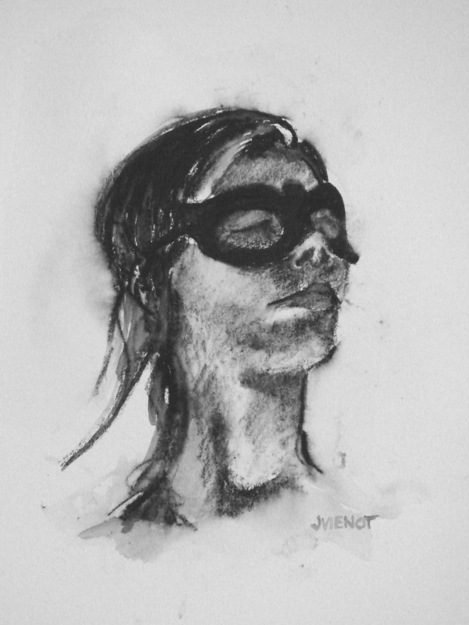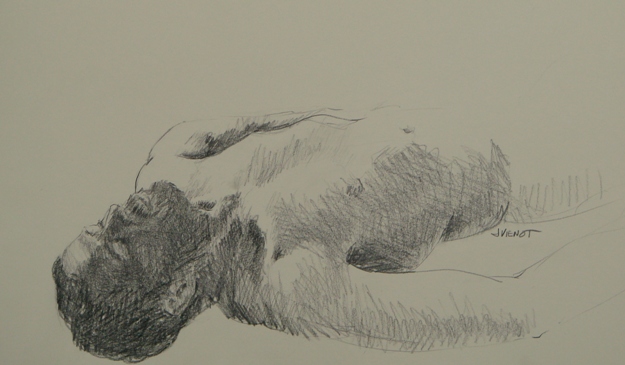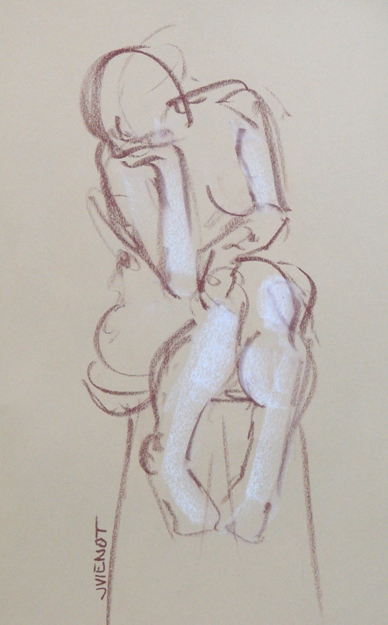
 The left side of the brain is the analytical side, the side that deals with facts, logic, and communication. The right side is the playful, emotional, and intuitive side, the home of creativity. When I take the “Left Brain Right Brain” quiz, my score is 70% right-brain, which is to say that the right hemisphere of my brain dominates the way I process information. I suspect many artists are 100% right-brain. Certainly a disproportionate number are left-handed, more than the 10% found in a standard population group. I am right-handed, but can do many things left-handed, especially if I practice.
The left side of the brain is the analytical side, the side that deals with facts, logic, and communication. The right side is the playful, emotional, and intuitive side, the home of creativity. When I take the “Left Brain Right Brain” quiz, my score is 70% right-brain, which is to say that the right hemisphere of my brain dominates the way I process information. I suspect many artists are 100% right-brain. Certainly a disproportionate number are left-handed, more than the 10% found in a standard population group. I am right-handed, but can do many things left-handed, especially if I practice.
Some people can carry on a complete rational conversation while drawing or painting. Being right-brain dominant, I can’t. Sometimes I can’t get a single word to come out of my mouth. Once in a while the studio owner will come around to the artists and ask if they would like something to drink, and many times I have not been able to answer even though I wanted to, until I stopped drawing for the moment.
So I found myself extremely challenged this week when one of the artists and the model talked all the way through one of the poses at our Wednesday evening figure drawing session. Ordinarily, the subject would have fascinated me, but it interfered with my efforts to draw. At first I tried to ignore their conversation and put it out of my mind, and then when I found that impossible, I found myself getting angry because I couldn’t draw very well while listening to the conversation — I kept making mistakes. So then I tried to not be angry, to be mature, to be non-emotional and unattached, but I just found myself getting madder and madder! Finally, I gave up and just quit drawing that pose, and waited for the pose to change before mentioning my difficulty to the artist and the model. I had always thought that artists stayed quiet for the most part during figure drawing sessions so that they could concentrate. It never occurred to me that it would actually be impossible for me to draw while a conversation was going on. Thanks to my recent practice of a meditation and learning a little yoga, I think I got further along than I would have a few years ago, but apparently I don’t have enough control over my mind to be able to ignore a complete logical conversation. When I mentioned it to the talkative artist afterwards, I said that I was going to have to come to terms with it, but the artist graciously offered simply not to talk during the poses and I have to say, I was greatly relieved. I think the only way I could have handled it was to wad up some paper and stick it in my ears!
So for those of you who live with an artist, cut them a break — if you say something to them while they are painting, it probably really does go in one ear and out the other! Even if they say “Yes, Dear”!
Interestingly, I very much enjoy the single comments the artists make during the figure drawing sessions, comments which require no response, like telling the model they sure do have a lot of toes, or, halfway through a pose, asking where that other leg suddenly came from. Once in a while there is a comment on the music, or a parody of the singer, always humorous and playful, and these sorts of comments are a delight.
The model this week was partially dressed, which creates a completely different effect than fully nude. I have often thought that if a little is left to the imagination, whether in literature, or visual art, or theater, it can make it more interesting. The viewer or the reader has to participate more than if everything is fully stated.
 |
 |
 |
 |
Most of my images are available for purchase. Contact me if you are interested. — Joan Vienot









































